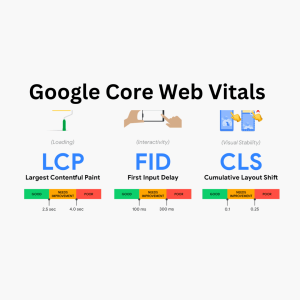The offer for website services on the Internet is overwhelming nowadays. You know you need a website, but how to select the right developer or provider for you? Is there any criteria you can follow to discriminate between all the different services you can find online? In this post we try to outline a few simple considerations you should bear in mind while “shopping” for websites.
-
Security
Setting up a nice looking website, with the correct tools such as for example a CMS system like Joomla, Drupal or WordPress and pre-made graphical templates, is a quick and easy task, once you are setup. Everybody with some basic skills can do it, these tools are so user friendly today. What is generally overlooked by beginners is that keeping up and running such a system requires solid maintenance and a fair amount of work. Because they are so widespread, they are favorite targets for hackers. If a vulnerability comes out, which happens regularly, the thousands of installations of the particular version are at risk and require updating or patching. Updates and patches are indeed regularly released by the groups who develop these systems. How many site administrators regularly update their sites with the latest releases? Lots of them, maybe the majority. However a certain percentage, that include people that pretend to sell professional sites either simply don’t do it, or they don’t do it on a regular basis and do not have a constant update strategy ongoing. This puts their websites (and yours, if they developed and host the site for you) at great risk of being hacked. The consequences of this can go beyond loosing your website. We did put security as first point, as without security there is no web site online, plain and simple. Only problems.
-
Contents Management and Updates
A website is usually born as an empty box. It comes with an home page, some graphical elements, a logo, navigation menu(s), possibly some sections/categories of contents and maybe some empty pages in the various sections. Since an empty site generally does not look nice. The fact that somebody has to fill up the initial contents and then update these contents when required, is often overlooked, given for granted or simply not considered by the client. Still, contents have to be inserted and managed.
Many considerations are relevant here. First, will the contents change in time? How much, if so? Many showcase sites have relatively static contents and once the initial contents are inserted in the pages, the need for updates is fairly limited. This is a good case, where the concern about the easy of contents updates is limited. Your provider/webmaster can probably do it for you, when required, with limited work and costs. -
Pleasing the eye: web site graphics
Maybe you have some basic skills in html/css and know how to open an hosting account, register a domain name and put up a simple web page. Does this qualifies you as a webmaster? Well, yes indeed. If you want to setup a personal website, or a website for friends and family, fine. Are you a professional webmaster then? Ehm, sorry, no. Setting up a beautiful web site with a consistent navigation framework requires experience. Designing website graphics is a specialized job that comes with his own set of skills, distinct from the web coding skills. As all artistic skills, it conjugates personal inclinations and sensibility with technical knowledge of some specialized software tools required to generate a professional graphics.
If your goal is to get to a professionally designed, gorgeous web site, you should definitely use a design produced by a professional web designer. -
Set an appropriate budget
In my webmaster career, I very often find the idea, in clients, that websites should be inexpensive. After all, as we said, there is an overwhelming offer of websites, on and offline, and sometimes these are offered really, really cheap. So if you can get a web site for very little, why should you get the same (a web site), by spending the horrible amount of money that some providers/designers try to charge? The answer is that although you think you are getting the same (a web site), this is not the case. Here are some points to consider:
- Does the person/group offering the website have a proven record-track of keeping several websites online for a significan amount of time?
- Where will be your site hosted? Will you have a solid, professional hosting or does your provider uses some cheap/bulk hosting services?
- Are site backups performed regularly?
- Does your provider has the skills to act on unexpected events/security breach? Is he professionally organized to deal with emergencies?
- Will your site have a professional design and a consistent navigation framework? This is different from just “looking good”
- Who will care about contents management and updates? Is this you? Which tools will your provider give you to do that? Or will the contents be managed by your webmaster? Are there additional costs for this?
- Is your webmaster available in real time for support? How can you contact him? What are the average response times? What is the quality of the support you are getting? Can you contact your webmaster by phone in case of emergencies, or is it just an e-mail or web form-based interaction?
- If you need to make a change, to request a special feature, will your webmaster be able to deliver? Or is he just an average web guy with some basic skills? How much will your webmaster’s skills allow you to modulate your online presence in time, grow, add features, make changes? This is not something that you necessarily know when you “buy your web site”, yet these are things you should consider carefully. Who is selling you the website, what do you know about his experience and skills?
As you see, the idea that a website is just a web site is extremely misleading. A website should be considered as a project. To be successful in a project you want to team up with the right people. The more complex and “important” the web site, the more it becomes essential that you get a skilled webmaster to do the job. And skills are not free: set an appropriate budget, instead of going for the (apparently) cheaper option. Going cheap has costs involved.
-
Carefully plan your navigation tree and navigation framework
A standard setup for navigation is that from each single page of the website you should be able to:
- go up one level (reach the parent section/page, if any)
- access the level(s) below
- Access the “siblings” pages within the same section
- return to the home page
Each of these navigation options should have a distinct look, and keep this look and positioning across the whole web site so that the visitor soon feels at home while browsing your site. Be consistent and predictable. This is to be avoided in may situations of life, but it is a good thing while implementing a navigation framework.
-
First impact: the home page
Many (far from all though!) of your visitors might enter your website from the home page. Together with the sections and subsections design, planning the various elements that will populate the home page of your site is one of the first things to consider, before starting development. Here is a tentative list of things you might consider including. None is really essential, and you could decide to think entirely out of the box here. Some elements might be missing. Here you go, anyway:
- Logo
- Site name (can be in the logo)
- Site slogan (can be in the logo), a short sentence, a few words about your site. Mind that text in the images cannot be read by search engines, so consider carefully what you have to do to optimise your search engine popularity here. If you use images, be sure to use (or to have your webmaster use) ALT tags generously.
- A paragraph of text describing what your website/business/activity/project is about. Again, great for search engines and for your visitors aswell, don’t keep them guessing too much. Did I already mention that they could decide to ignore you?
- Navigation menu(s), see point 5 above
- A news box and/or important event box? Maybe to be activated or deactivated depending on the availability of events or more in general, things to point out.
- A website footer. The contents are up to you. They could typically be links to “secondary/service” pages such as “contact us” or “site map”, copyright statements, credits etc..
You should consider that the contents of the header (logo, slogan, top bar navigation menu) and footer, maybe with some variations, might well be displayed over your entire web site, in each single page. They are important elements to be designed with care.
-
Frequently updated contents: should I have a news section? A user’s forum? A BLOG?
It is great to have an highly interactive web site full of updated contents, where users contribute by posting material and comments. On the other hand, nothing is more sad and desolated than a forum with 2 posts and one reply, that remain online, with no additions, for years. The truth is, starting a community is not easy, it requires work, planning, great initial contents. So if you plan to start a forum, be ready.
If you have a showcase website you do not want to work on too much, keep it simple and clean, it will do his job nicely without unnecessary bells and whistles. If on the other hand the website is central to your business, and his success is your success, then definitely work on interactive and dynamic sections as they are a great added value. -
Who is visiting? Don’t remain in the dark
Where do your visitors come from? How do they come to your site ? How many visitors come to your site each day? What do they do while on the site, how many pages on average do they visit? Which are the most visited pages? All these questions should have an answer in order for you to get the feel of how the site is performing, how to make it better and attract more visitors, how to change and adapt the navigation flow so as to keep the users on the site longer.
You should make sure your site has a good web site visits tracking software in order to address these issues. One of the best systems in this respect is google analytics. If your website is central to your activity, consider getting an account (or make sure your webmaster is signed up) and start tracking visits to your website in a professional way. Even a quick periodic analysis of the data can provide valuable insights on what is your website for your visitors. Don’t remain be blinded by what YOU think your site is for them. See the real thing and act accordingly. -
Your website and search engines: SEO
If your website never show up in search engines results, whatever the keywords, then you are on the good path for irrelevance. For your site to impact and be meaningful, you need visitors, and in average situations most of them will come from search engines. How many times your navigation starts by opening your favorite search engine, in search of something you need to know or are looking for?
You should select some keywords relevant to your activity and set the goal of being visible on search engines, for these keywords, at a decent position. A decent position means the first page of results, anything below this have a poor chance of being visited. We cannot discuss the techniques and strategies involved here, we will have future posts on this topic. However you should be aware this is a very important aspect to consider while planning and building a new web site. Make sure you hire a webmaster well aware about the importance of Search Engine Optimization (SEO). If this aspect is crucial for you, consider consulting with a SEO professional. With the growth of Internet and the economical and business implications, SEO has become a science on his own in the last years. -
Content wins, always
Visitors come to web sites for their own interest, not because they like you and want to please you by visiting your web site. It’s about them, their needs and interests, not yours. They don’t really care about your website, they care about them. Give them what they want, provide VALUE for them by offering relevant contents, this is why they are coming. Did I mention that they could easily decide to ignore you? I am always amazed on visting web sites that lack the most elementary information I came to the site for in the first place. So you own a restaurant. I love all the photos you want to show me, it’s great to know that the chef is your wife and that you have three happy kids. But for heaven’s sake, WHAT IS YOUR PHONE NUMBER SO THAT I CALL CALL AND MAKE A RESERVATION. Not in the “about us”. Not in the “contacts”, where you just have your e-mail. So I will just ignore you. This is a very simple example but make the point. Offer the expected contents, generously and well accessible and organized. Be predictable. It pays.




